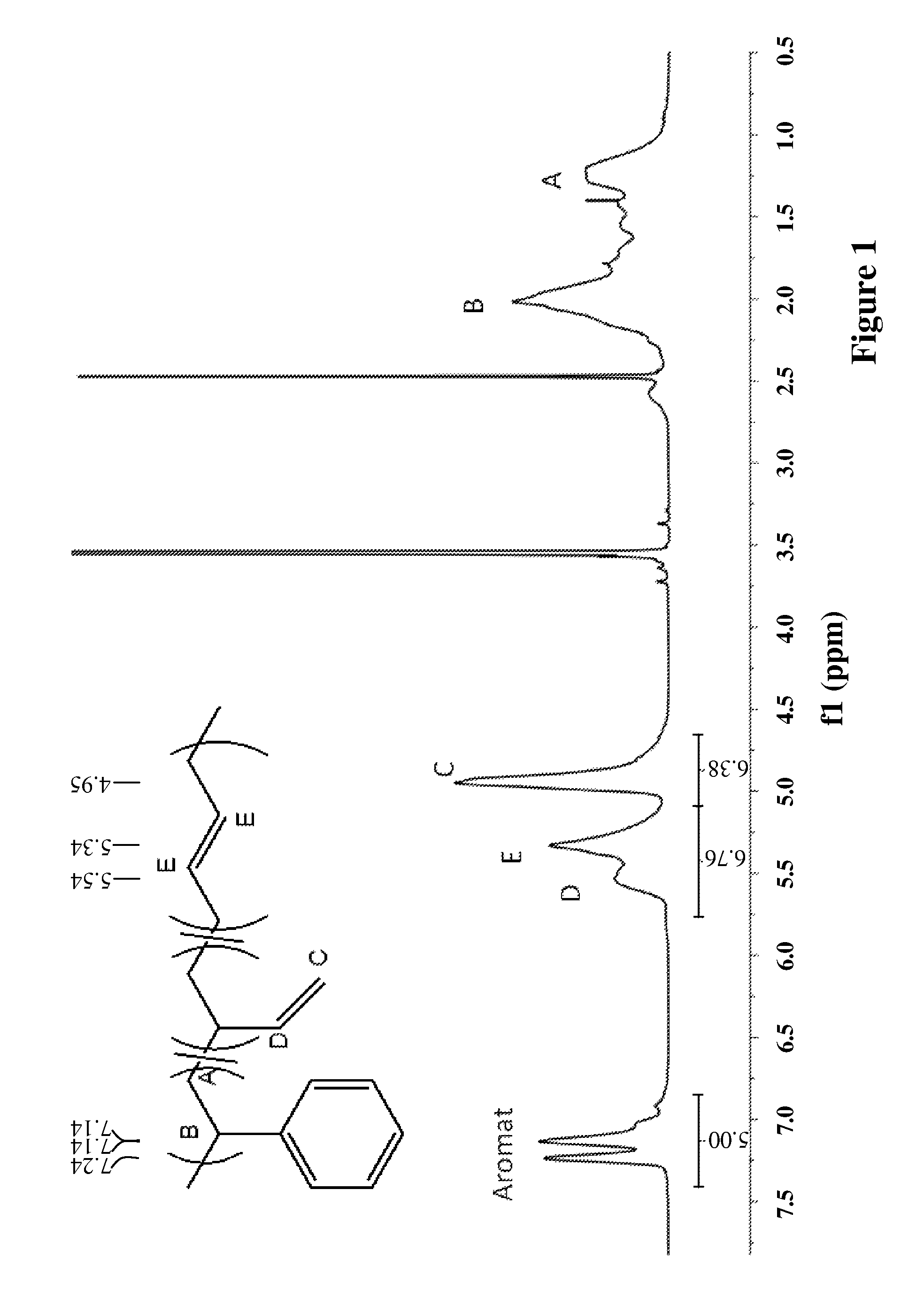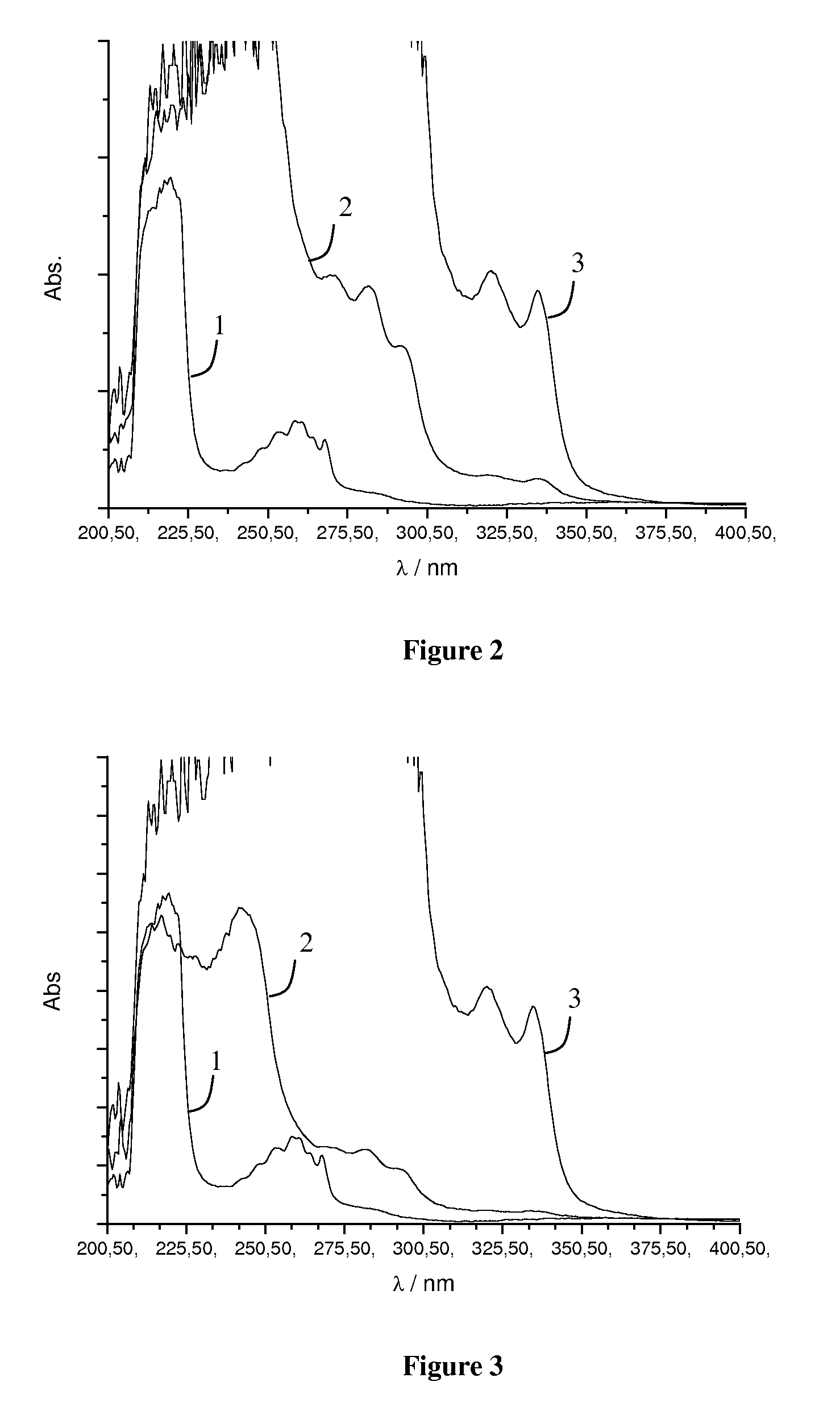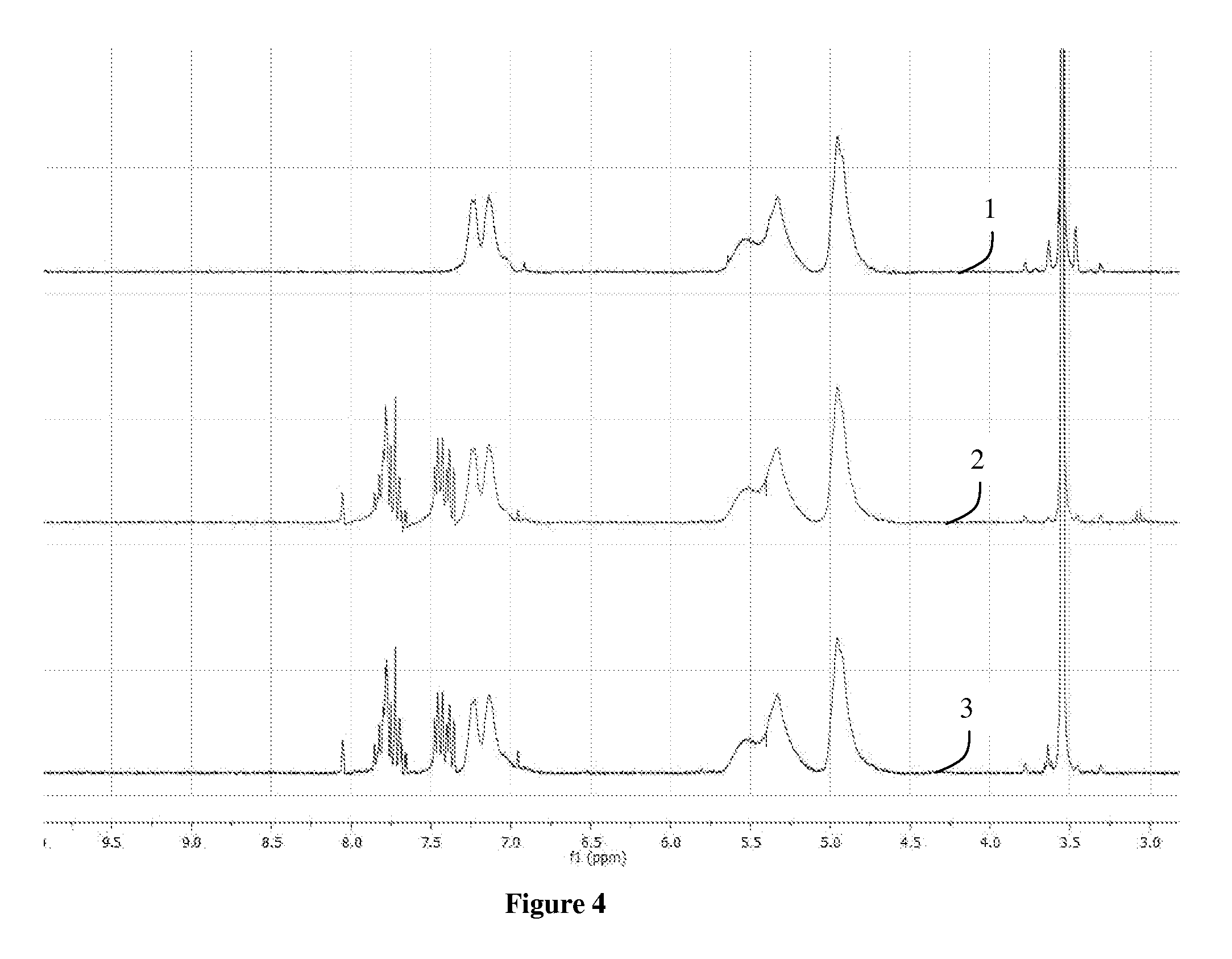Method of making a graft copolymer
a copolymer and graft technology, applied in the field of making graft copolymer, can solve the problems of macrophase separation, polymer coil collapse, and most likely detrimental effect of compound performan
- Summary
- Abstract
- Description
- Claims
- Application Information
AI Technical Summary
Benefits of technology
Problems solved by technology
Method used
Image
Examples
example 1
[0050]In this example, functionalization of a styrene-butadiene rubber with 2-mercaptonaphthaline is illustrated to demonstrate the thiol-ene reaction.
[0051]To test the reactivity and reaction conditions of the styrene-butadiene rubber in a thiol-ene reaction, some reactions with a model thiol were made. The chosen thiol was 2-mercaptonaphthaline, from Aldrich.
[0052]The properties of the used styrene-butadiene rubber are summarized in Table 1. FIG. 1 shows the 1H-NMR spectrum of the elastomer.
[0053]
TABLE 1Mooney (avg)27.6Finished Mooney23.1Tg (onset) / ° C.−21.74Tg (midpoint) / ° C.−17.52FTIR Styrene / %25.392FTIR Vinyl / %47.506FTIR Cis / %13.144FTIR Trans / %13.058Mn / g / mol124122Mw / g / mol207982Mz / g / mol327454PDI1.67
Synthesis of 2-mercaptonaphthaline Functionalized Rubber
[0054]This compound was synthesized twice, once with AIBN as initiator for the reaction and once with an acylphosphine oxide photoinitiator (Lucirin TPO).
[0055]For the reaction initiated by AIBN, 1 g of SBR was dissolved in 50 ml...
example 2
[0060]In this example, preparation of poly-(N-isopropylacrylamide), or PNIPAM, is illustrated.
[0061]RAFT-polymerization was used for the preparation of PNIPAM. For this purpose two alternative chain transfer agents (CTA) were prepared: S-1-Dodecyl-S-(αα′-dimethyl-α″-aceticacid)trithiocarbonate (DMP) and 4-Cyano-4-dodecylsulfanylthiocarbonylsulfanyl-4-methyl butyric acid (CDSMB).
[0062]
[0063]The RAFT reaction scheme is as follows:
[0064]
Synthesis of Chain Transfer Agents
S-1-Dodecyl-S-(αα′-dimethyl-α″-acetic acid)trithiocarbonate (DMP)
[0065]S-1-Dodecyl-S-(αα′-dimethyl-α″-acetic acid)trithiocarbonate was synthesized using literature procedure. [J. T. Lai, D. Filla, R. Shea, Macromolecules 2002, 35, 6754.]
[0066]Yield: 41%
[0067]1H-NMR (CDCl3 / 300 MHz): δ[ppm]: 0.85 (t, 3H), 1.16-1.47 (m, 20H), 1.71 (s, 6H), 3.26 (t, 2H), 13.05 (s, 1H)
4-Cyano-4-dodecylsulfanylthiocarbonylsulfanyl-4-methyl butyric acid (CDSMB)
[0068]4-Cyano-4-dodecylsulfanylthiocarbonylsulfanyl-4-methyl butyric acid was synthe...
example 3
[0082]In this example, functionalization of a styrene-butadiene rubber with PNIPAM is illustrated.
Synthesis of Functionalized Rubber Elastomers
[0083]Functionalized elastomer was produced using the following general procedure: A solution of SBR, AIBN and the thiol in dry THF was degassed under argon atmosphere at room temperature for 2 hours. The exact amount of educts for each reaction is shown in Table 4. The reaction mixture was then placed in a preheated oil bath at 70° C. for at least 20 hours. To make sure that no free thiol was in the reaction product, the product was dialyzed against THF for three days. After the dialysis the solvent was evaporated and the product was dried under vacuum. The results of the elemental analysis of three functionalized elastomers are shown in Table 5, with the calculated weight percent of PNIPAM in the resulting functionalized SBR.
[0084]The 1H-NMR spectrum of the SBR (1) and of the functionalized rubber (2) are shown in FIG. 8. As seen in FIG. 8,...
PUM
| Property | Measurement | Unit |
|---|---|---|
| LCST transition | aaaaa | aaaaa |
| temperature | aaaaa | aaaaa |
| concentration | aaaaa | aaaaa |
Abstract
Description
Claims
Application Information
 Login to View More
Login to View More - R&D
- Intellectual Property
- Life Sciences
- Materials
- Tech Scout
- Unparalleled Data Quality
- Higher Quality Content
- 60% Fewer Hallucinations
Browse by: Latest US Patents, China's latest patents, Technical Efficacy Thesaurus, Application Domain, Technology Topic, Popular Technical Reports.
© 2025 PatSnap. All rights reserved.Legal|Privacy policy|Modern Slavery Act Transparency Statement|Sitemap|About US| Contact US: help@patsnap.com



